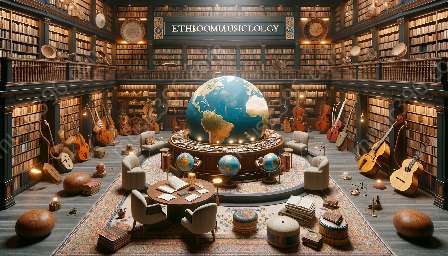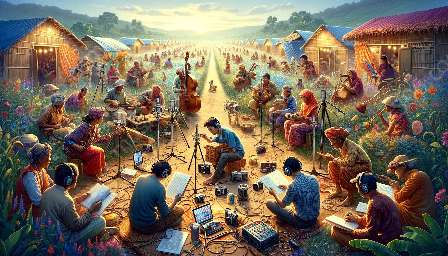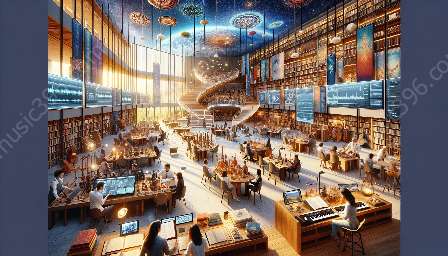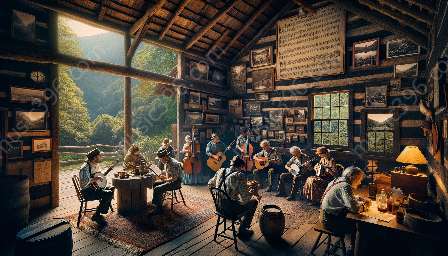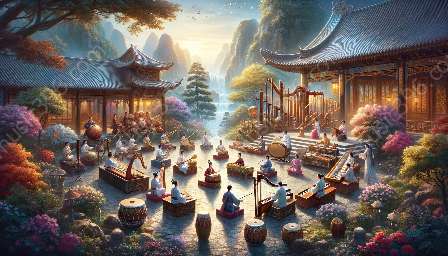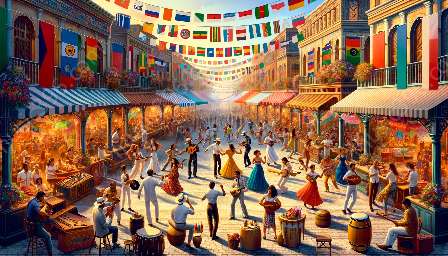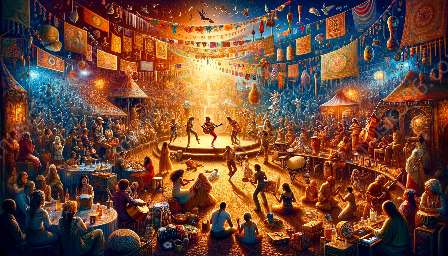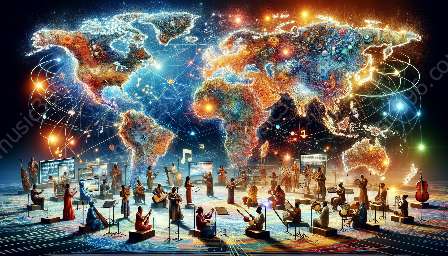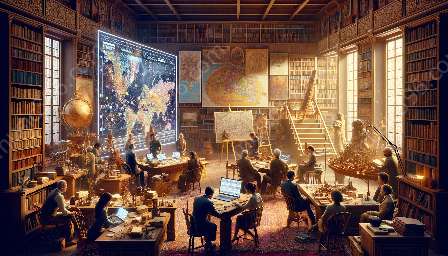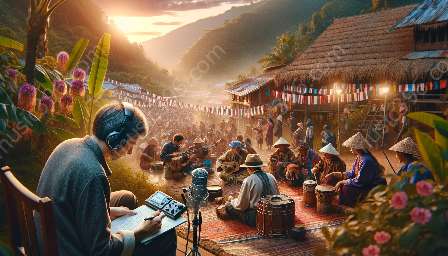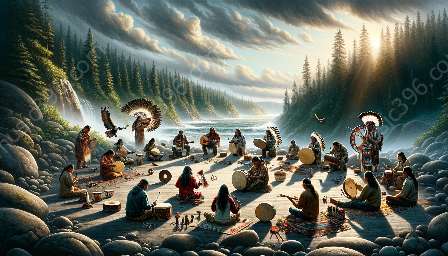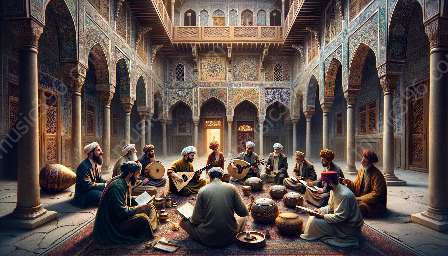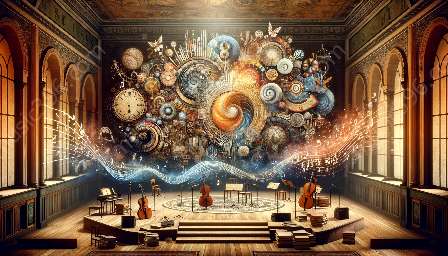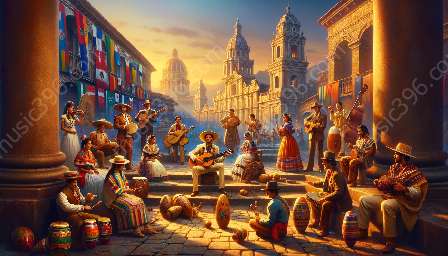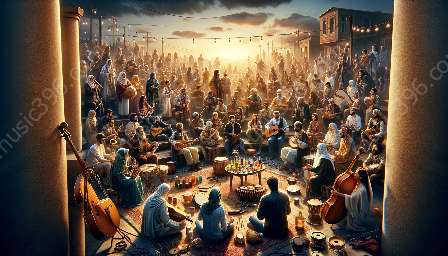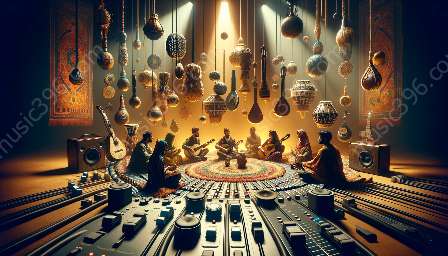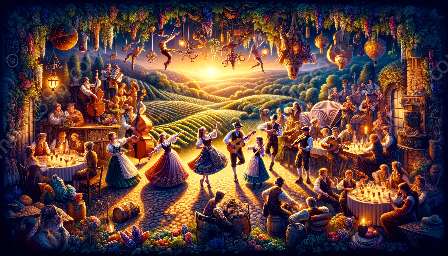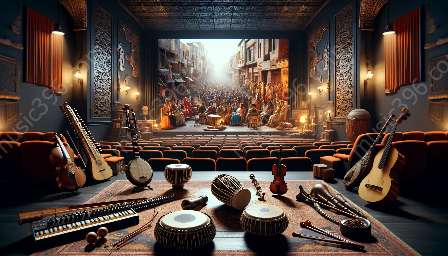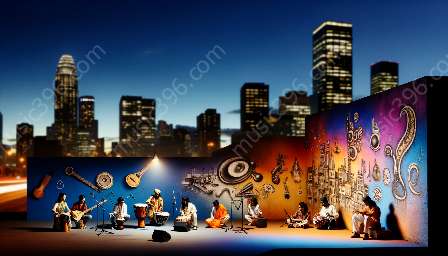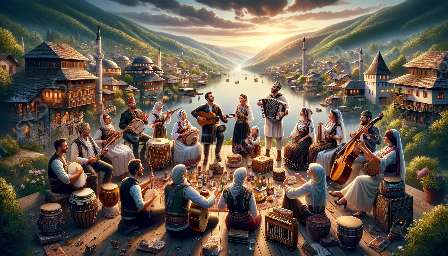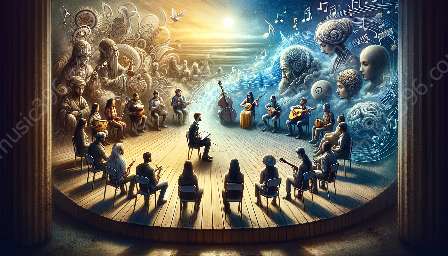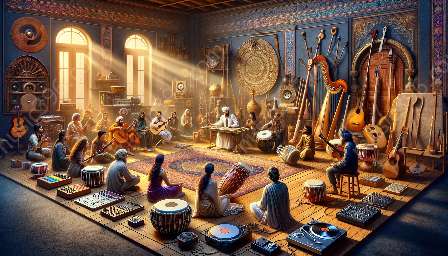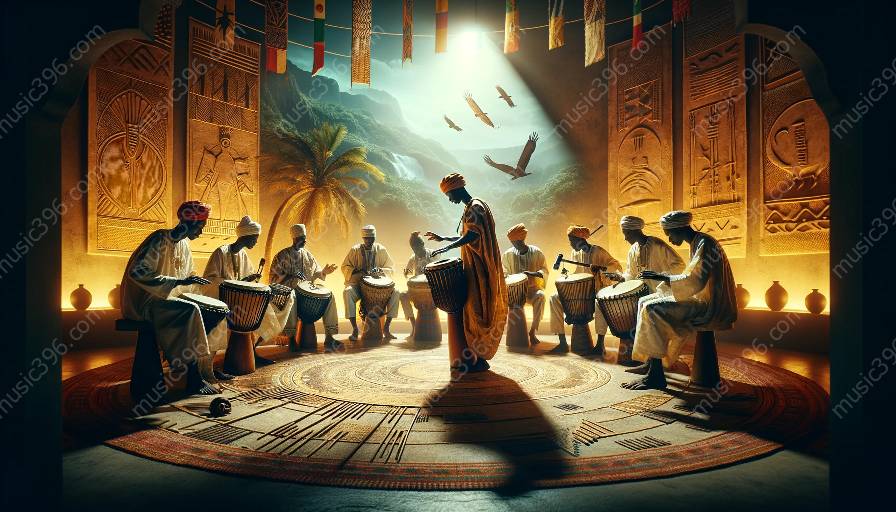Africa is a continent rich in diverse cultural expressions, with music, visual arts, and literature playing central roles in communicating the unique narratives and traditions of its people. When exploring the connections between African music, visual arts, and literature, it becomes evident that these disciplines are deeply intertwined, each influencing and enriching the other in a myriad of ways. Let's embark on a captivating journey of interdisciplinary exploration as we delve into the vibrant world of African artistic traditions.
African Musical Traditions: A Rich Tapestry of Sound and Culture
African musical traditions are as diverse as the continent itself, encompassing a wide array of musical styles, instruments, and vocal techniques. Across the continent, music serves as a vehicle for storytelling, communal bonding, and ritualistic practices, reflecting the social, cultural, and spiritual fabric of various African societies.
The rhythmic diversity of African music is particularly notable, with intricate polyrhythms and complex time signatures defining many traditional genres. Drumming, one of the most prominent features of African music, holds deep cultural significance, serving as a means of communication, celebration, and ceremonial expression.
Furthermore, the oral tradition plays a vital role in the transmission of African musical heritage, with songs and chants serving as repositories of historical narratives, wisdom, and cultural knowledge. It is within this musically rich and diverse landscape that we begin to explore the interdisciplinary connections between African music, visual arts, and literature.
Visual Arts: A Reflection of African Cultural Identity
The visual arts in Africa encompass a wide spectrum of artistic expressions, including traditional crafts, sculpture, painting, and contemporary art forms. Visual art serves as a powerful medium through which African cultural identity, spirituality, and societal values are conveyed and celebrated.
One of the most striking aspects of African visual arts is its close connection to music and dance. Many visual art forms are influenced by and intertwined with musical traditions, with motifs, patterns, and symbols often inspired by rhythmic movements and melodic structures.
The use of vibrant colors, intricate patterns, and symbolic imagery in African visual arts reflects the interconnectedness of artistic forms, as well as the deep resonance between visual and auditory senses. This integration of visual and sonic elements creates a holistic experience that transcends individual art forms, contributing to the interdisciplinary dialogue between African music, visual arts, and literature.
Literature: Weaving Stories through Word and Song
African literature encompasses a wealth of storytelling traditions, including oral narratives, poetry, prose, and modern literary works. The storytelling tradition in African literature mirrors the oral transmission of musical knowledge, as both mediums are deeply rooted in communal sharing and the preservation of cultural heritage.
Many African literary works are infused with musical references, incorporating songs, rhythms, and chants into their storytelling. This fusion of literature and music creates a harmonious blend of artistic expressions, amplifying the emotional and cultural depth of the narratives being conveyed.
Furthermore, the themes and motifs found in African literature often parallel those present in visual arts and music, reflecting a unified cultural ethos that resonates across artistic domains. By exploring the interconnectedness of literature with music and visual arts, a more comprehensive understanding of African artistic heritage emerges, illuminating the intricate web of interdisciplinary connections within the continent's creative tapestry.
Ethnomusicology: Unveiling the Crossroads of Artistic Expressions
Ethnomusicology provides a compelling framework through which to explore the interdisciplinary connections of African music, visual arts, and literature. As an academic discipline, ethnomusicology delves into the cultural, social, and historical contexts of music, shedding light on the complex interplay between music and other artistic forms.
Through the lens of ethnomusicology, the dynamic relationships between African musical traditions, visual arts, and literature can be examined in depth, uncovering the underlying cultural meanings and intertextual resonances that inform creative expression across diverse artistic domains.
By employing ethnographic research methods, ethnomusicologists can capture the multifaceted interactions between music, visual arts, and literature within African communities, offering valuable insights into the interconnected nature of these expressive forms. This interdisciplinary approach not only enriches our understanding of African artistic traditions but also underscores the profound interwoven nature of human creativity.
Exploring Interdisciplinary Bonds: A Celebration of African Artistic Heritage
As we navigate the interconnected world of African music, visual arts, and literature, it becomes evident that these artistic disciplines are intertwined in a harmonious tapestry of cultural expression. The seamless integration of music, visual arts, and literature reflects the holistic nature of African creativity, where artistic expressions converge to convey profound narratives and communal experiences.
From traditional griot performances that blend storytelling with music and dance, to the vibrant visual symbolism found in African crafts and contemporary art, the interdisciplinary connections within African artistic traditions offer a compelling testament to the richness of creative fusion and cultural interconnectedness.
Through the convergence of African music, visual arts, and literature, a multidimensional narrative unfolds, amplifying the voices and stories of diverse African communities while celebrating the enduring legacy of artistic innovation and cultural resilience. This interdisciplinary exploration serves as a testament to the boundless creativity and interconnectedness that define African artistic heritage, inviting us to embrace the richness and diversity of African cultural expressions.

